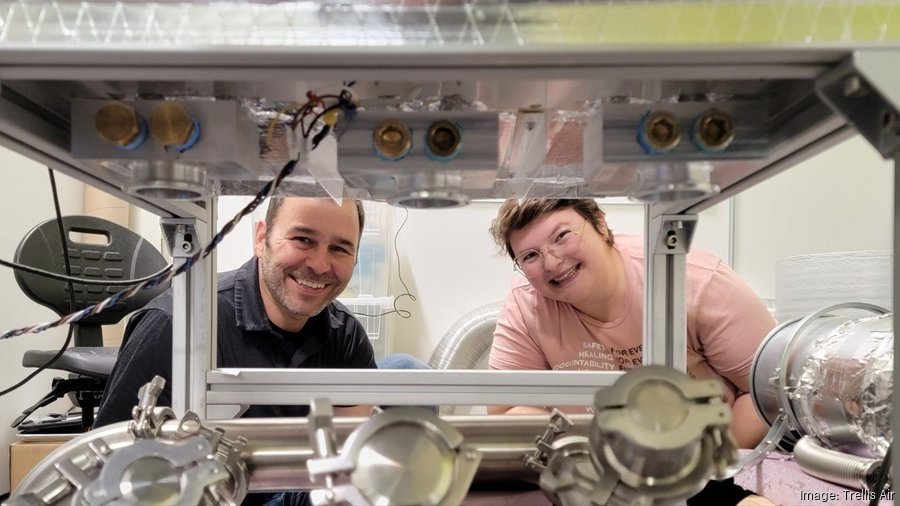Quantum computing is poised to revolutionize the way we process information, leveraging the principles of quantum mechanics to surpass the limitations of classical systems. Recent breakthroughs, particularly in molecular quantum computers, showcase the potential of trapped molecules to execute complex quantum operations. Researchers at Harvard have successfully demonstrated this capability, marking a significant step forward in the field of quantum technology. By utilizing novel quantum gates and harnessing quantum entanglement through the manipulation of polar molecules, they have opened new avenues for computation that were previously thought impossible. This innovative approach not only enhances processing speeds but also promises unprecedented advancements across various sectors, including pharmaceuticals, finance, and computational science.
The realm of advanced computation is evolving with the emergence of next-generation systems that capitalize on the intricacies of atomic and molecular behaviors. Terms such as molecular quantum systems and quantum logic gates are becoming central to discussions on how to enhance processing capabilities in computing. As researchers delve into the mechanics of qubits—where single units of quantum information can exist in multiple states simultaneously—the implications for fields like machine learning, cryptography, and artificial intelligence are profound. The manipulation and entanglement of trapped molecules represent a cutting-edge frontier, drawing on principles that have intrigued scientists for decades. With the science of quantum entanglement at the helm, these innovative methodologies hint at a future where information processing might reach astonishing new heights.
The Significance of Trapped Molecules in Quantum Computing
The advancement of trapped molecules in quantum computing signifies a paradigm shift in our understanding and application of quantum mechanics. Molecules have long been seen as intricate structures too complex for practical use as qubits, which are the building blocks of quantum equations. However, recent breakthroughs by researchers, as noted in the study, reveal that by utilizing ultra-cold polar molecules, scientists can perform quantum operations with unprecedented precision. This approach not only leverages the unique properties of molecular systems but also reveals their potential to enhance quantum entanglement, a critical resource that underpins the power of quantum computing.
Understanding how trapped molecules can be utilized in quantum computing opens doors to exploring a myriad of computational possibilities. With unique internal structures that traditional qubits lack, these molecules can potentially offer richer quantum states and complex interactions. As researchers refine techniques such as optical tweezing and manipulate dipole interactions, they pave the way for the construction of molecular quantum computers which could revolutionize various fields, from cryptography to drug discovery. The intricate relationship between quantum gates and trapped molecules could lead to significant advances in creating robust, high-performance quantum systems.
Quantum Gates: The Building Blocks of Computational Power
Quantum gates serve as the fundamental units of quantum circuits, facilitating the processing of information in quantum computing much like classical logic gates do for traditional computers. However, the distinctive feature of quantum gates is their ability to operate on qubits which can exist in multiple states at the same time, allowing for complex operations vital for advanced computational tasks. The introduction of the iSWAP gate in the Harvard team’s experiment, which entangled two sodium-cesium molecules, showcases how quantum gates can become increasingly sophisticated alongside innovations in molecular quantum computing.
The manipulation of quantum gates is crucial in maximizing the potential of quantum technologies. The successful execution of operations, such as the entangled two-qubit Bell state, illustrates a practical application of these gates in action. The ability to perform quantum operations with high accuracy signifies a key milestone, as upcoming quantum systems strive for stability and reliability. As scientists explore the quantum mechanics welding of molecular structures and logic gates, the potential for new quantum algorithms and applications expands significantly, pushing the boundaries of computational capability.
Achieving Quantum Entanglement with Molecular Precision
Quantum entanglement stands as one of the most perplexing and fascinating phenomena within quantum mechanics, enabling particles to become interconnected in ways that classical physics cannot explain. The successful demonstration of entanglement using trapped molecules not only highlights a significant scientific achievement but also underscores the importance of fine-tuning the quantum states through precise manipulation. The process of generating entangled states, as executed in the Harvard study, illustrates how complex internal molecular structures can be used to harness quantum properties efficiently.
Utilizing trapped molecules to achieve quantum entanglement could redefine how we understand and utilize quantum systems in practical applications. The implications of this research extend into fields such as secure communications and quantum networking, where entangled states can facilitate unimaginable speeds and security measures. As researchers continue to navigate the intricate interactions between different molecular systems and advance their understanding of quantum entanglement, the potential to unlock new dimensions of computational and cryptographic technologies looms large.
Molecular Quantum Computers: The Future of Computing Technology
The dream of a molecular quantum computer has been fueled by scientists’ fascination with the abilities of molecular systems to perform complex calculations at speeds unattainable by classical computers. The critical step taken by the Harvard team, which involves trapping molecules to exploit their quantum properties, brings us closer to realizing this vision. With the potential to create more stable and efficient qubits, molecular quantum computers may soon outperform existing technologies, opening the door to revolutionary innovations in various scientific and engineering disciplines.
As research in molecular quantum computing progresses, it becomes evident that we stand on the brink of groundbreaking developments in technology. By harnessing complex molecules, particularly through methods that stabilize their motion and manipulate their quantum states, researchers can build quantum circuits that promise enhanced computational power. The insights gained from these experiments could lead to new designs for quantum processors and improved methods for error correction, ultimately guiding the development of commercially viable quantum computing systems.
Overcoming the Challenges of Molecular Stability in Quantum Operations
One of the significant hurdles in using molecules for quantum operations has been their inherent instability, which can disrupt coherent quantum states needed for reliable computations. Molecules have complex internal dynamics that can lead to unpredictable movements, posing challenges for experiments requiring precise control. However, by employing techniques such as optical trapping in ultra-cold environments, researchers have begun to mitigate these challenges, paving the way for successful quantum operations and stable entangled states.
This meticulous approach to managing molecular stability could revolutionize how quantum computing systems are built and operated. Future innovations will likely focus on refining these stabilization techniques and exploring new methods for controlling quantum states in molecular systems. As scientists gain more control over molecular stability and enable reliable quantum operations, it shall unlock new applications and improvements in quantum technology, thus accelerating advancements in various scientific realms.
The Role of Optical Tweezers in Quantum Computing Innovations
Optical tweezers, an advanced technology using laser beams to manipulate small particles, play a pivotal role in the recent successes reported by the Harvard research team. By leveraging these tools, researchers can trap sodium-cesium molecules with exceptional precision in ultra-cold environments, thus achieving the stability necessary for quantum operations. The delicate steering of molecular movements allows for the successful implementation of crucial quantum gates and entangled states, which are vital for the operation of molecular quantum computers.
The future of quantum computing may heavily depend on further advancements in optical tweezing technology. By refining the techniques used to manipulate molecular systems, quantum researchers could enhance the accuracy and efficiency of their experiments. The ability to conduct intricate quantum operations through optical tweezers opens new pathways for exploring unexplored regions of quantum mechanics and allows for the potential development of novel quantum technologies that can significantly surpass current capabilities.
Current Trends in Quantum Computing Research
The landscape of quantum computing research is rapidly evolving, guided by breakthroughs such as those accomplished by the Harvard team. With increased funding and collaborative efforts spanning universities, research institutions, and tech companies, there is a strong emphasis on exploring diverse quantum systems. The shift toward utilizing trapped molecules as qubits represents not just a novel strategy but also a response to the limitations observed with existing methods such as ion trapping and superconducting circuits.
Current trends highlight an interdisciplinary approach, combining insights from physics, chemistry, and computer science, which is essential for overcoming the inherent challenges of molecular systems in quantum computing. As more researchers dedicate their efforts to understanding molecular quantum computers, advancements in algorithms, error correction techniques, and hardware developments are anticipated to emerge. This confluence of innovation is set to propel quantum computing technologies from experimental concepts to functional systems that can transform industries worldwide.
The Future Impact of Molecular Quantum Systems on Industry
As molecular quantum computing technology matures, its implications for various industries are poised to be transformative. Industries such as pharmaceuticals, finance, and artificial intelligence could experience significant advancements through the immense computational power offered by molecular quantum computers. For instance, in pharmaceuticals, the ability to simulate complex molecular interactions could dramatically accelerate drug discovery processes, leading to more effective treatments being developed at an unprecedented rate.
In finance, molecular quantum systems could revolutionize algorithmic trading strategies and risk assessments by processing vast amounts of data and executing transactions at speeds surpassing those achievable by classical computers. Beyond these applications, the robust nature of molecular quantum computers also harbors potential for advances in machine learning and optimization problems across sectors, shaping a future where industries leverage quantum capabilities to drive unprecedented efficiency and innovation.
Collaboration Across Disciplines: The Key to Quantum Breakthroughs
The progress achieved in molecular quantum computing is a testament to the power of collaborative research across disciplines. Teams of physicists, chemists, and engineers working in tandem create an environment ripe for breakthroughs in technology and methodologies. The Harvard team’s success relied heavily on combining expertise from multiple fields to tackle the challenges presented by molecular manipulation and quantum operations. Such interdisciplinary collaborations are instrumental in advancing the frontiers of science and technology related to quantum computing.
Encouraging collaboration across disciplines not only fosters innovation but also allows for a pooling of resources and knowledge, essential for addressing complex problems. As researchers strive to refine molecular quantum systems and explore their practical applications, continuous dialogue among diverse scientific disciplines will enhance the efficacy and reach of their efforts. By uniting different areas of expertise, the scientific community can unleash new avenues of research that may ultimately redefine our understanding of computation and its capabilities.
Frequently Asked Questions
What is a molecular quantum computer and how is it related to quantum computing?
A molecular quantum computer utilizes the complex internal structures of molecules as qubits to perform quantum operations, enabling faster and potentially more powerful computations compared to traditional quantum systems. This innovation allows scientists to exploit molecular entanglement and quantum gates for advanced computing tasks.
How do trapped molecules enhance quantum operations in quantum computing?
Trapped molecules improve quantum operations by stabilizing the delicate quantum states required for computing. The ability to control and manipulate molecular movements in ultra-cold environments allows for the execution of precise quantum operations, leading to improved accuracy in generating and maintaining entangled states.
What role do quantum gates play in quantum computing with trapped molecules?
Quantum gates are essential for processing information in quantum computing, operating on qubits to perform calculations. In the context of trapped molecules, quantum gates like the iSWAP enable the generation of entanglement and the manipulation of multiple quantum states simultaneously, enhancing computational capabilities.
Why is quantum entanglement important for quantum computing?
Quantum entanglement is a critical property that allows qubits to become correlated, enabling quantum computers to perform tasks that classical computers cannot, such as executing operations across different states instantaneously. This interconnectedness forms the backbone of quantum algorithms and computations.
What recent advancements have been made in quantum computing using trapped molecules?
Recent advancements include the successful trapping of sodium-cesium molecules to perform quantum operations, marking a significant milestone toward building molecular quantum computers. Researchers have demonstrated the ability to create a two-qubit Bell state with high accuracy, highlighting the potential of molecular systems in quantum computing innovation.
How does the use of optical tweezers contribute to quantum computing with trapped molecules?
Optical tweezers allow precise control of trapped molecules by using focused laser beams. This technique minimizes unwanted motion and stabilizes the quantum states of the molecules, enabling researchers to conduct reliable quantum operations essential for the functionality of a molecular quantum computer.
What challenges have scientists faced when integrating molecules into quantum computing?
Scientists have faced challenges related to the inherent instability and unpredictability of molecular movements, which can disrupt coherence necessary for reliable quantum operations. However, advancements in trapping molecules in ultra-cold environments have helped mitigate these issues, allowing for more stable quantum states.
What future implications does the trapping of molecules have for quantum computing?
The successful trapping of molecules for quantum operations opens up new avenues for developing molecular quantum computers, which could dramatically enhance computational speed and capabilities. This progress suggests a shift towards more complex quantum systems that leverage molecular characteristics for innovative computing applications.
| Key Points |
|---|
| First successful trapping of molecules for quantum operations, led by Kang-Kuen Ni and team, marking a significant advancement in quantum computing technology. |
| Utilized ultra-cold polar molecules as qubits, allowing for complex internal structures to enhance quantum computing capabilities. |
| The research demonstrates the creation of an iSWAP gate with 94% accuracy, a crucial advancement for constructing molecular quantum computers. |
| Investigators minimized molecular motion through optical tweezers, enabling better control over quantum states. |
| Published in *Nature*, this study opens new avenues for the future applications of molecular systems in quantum technology. |
| Research supported by prestigious organizations like the Air Force and National Science Foundation, highlighting its significance. |
Summary
Quantum computing has reached a remarkable milestone with the successful trapping of molecules to perform quantum operations for the first time. This breakthrough, led by a team from Harvard, paves the way for utilizing complex molecular structures to enhance the speed and efficiency of quantum computers. By using ultra-cold polar molecules as qubits, researchers have demonstrated the potential for creating molecular quantum computers. As this field continues to evolve, it opens up exciting possibilities for addressing complex computational challenges in various domains such as medicine, finance, and science, thereby revolutionizing our technological landscape.



